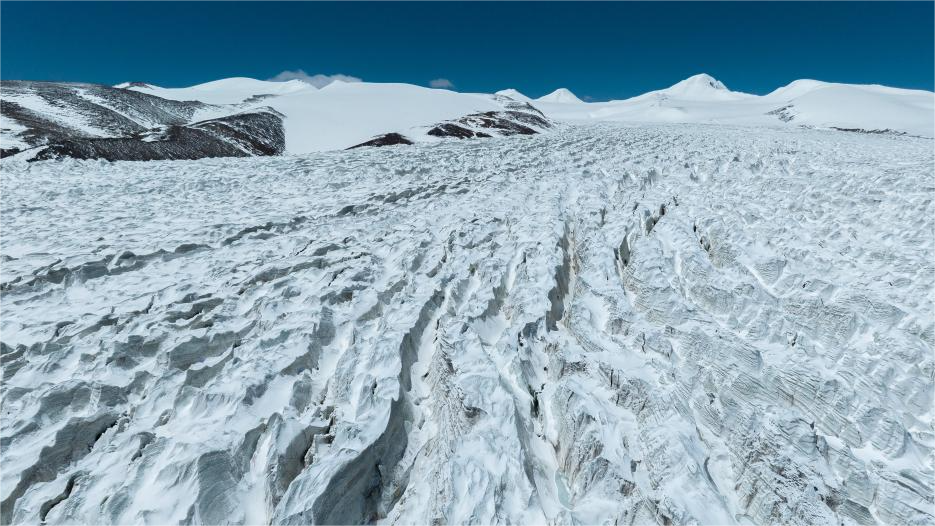Letter from Lhasa: An exhausting but exhilarating trek through enigmatic Himalayan valley
LHASA, May 16 (Xinhua) -- If you ask me what is the most unforgettable hiking experience in my life, I'd definitely say it was the one to Gama Valley, the most beautiful valley in the Himalayan region in China's Xizang Autonomous Region.
The majestic Himalayan Mountain range, stretching through the hinterland of the Qinghai-Xizang Plateau and South Asia, boasts five major valleys recognized as the essence of the Himalayan landscape in the city of Xigaze, with Gama Valley being one of them.
Unlike the other four populated valleys with concrete roads, Gama Valley has no paved paths. Adventure lovers must trek through the 55-km valley at altitudes ranging from 2,100 meters to over 5,000 meters to enjoy the breathtaking landscape of snow-capped mountains, winding streams and diverse wildlife. On a clear day, several world-class peaks, including the 8,848-meter Qomolangma, also come into view.
Due to weather and time constraints, my colleagues and I were only able to complete a small section of the valley to shoot videos and photos.
Before I started my journey, a local guide mentioned that only 2,000 people tackled this challenging hike last year, which made it even more intriguing to me.
My hike began at around 3,600 meters above sea level on entirely natural trails covered with broken rocks. To my left, a pristine stream flowed down the mountain. Along the stream, I walked into an alpine meadow, where shrubs and yet-to-bloom azaleas lined the center of the valley.
Our guide told us that the azalea is a rare local species, and its flowers are exceptionally beautiful when they bloom. As I was admiring the plants, the guide nudged me and explained that to protect the flowers, locals like him do not allow tourists to pick them.
As I climbed the mountain against the stream, stepping on rocks covered in green moss, the water soaked my shoes, forcing me to trudge along, leaning heavily on my hiking poles. I had to stop frequently to catch my breath in the thin air at altitudes up to 4,200 meters, sometimes removing my windproof face mask for relief.
As the altitude rose, the ground gradually became covered in snow, increasing from ankle-deep to halfway up my calves. I also passed a mountain pond with water so clear I could see the clouds reflected in it. When the sun emerged from behind the clouds, the magnificent view largely dispelled my fatigue. Hearing the bells of the yaks carrying our luggage in the whistling wind, I soon found inner tranquility and completely forgot the snow in my shoes.
Every step I took made me realize why Gama Valley is so challenging for trekkers. Along the way, we encountered narrow paths twice -- once in mud and once in snow. Afraid of sliding down the steep slope, I was so nervous that my legs trembled as I passed through.
Another challenge was the unpredictable weather. As I traversed the snow-covered boulders, the previously clear sky began to snow. It felt like my eyes were going to freeze. Exhausted and panting heavily, I was unable to walk any further, but the desire to see the splendid scenery encouraged me to keep going.
Five hours after setting off, I finally reached the resting spot. While drying my shoes and socks, I chatted with Dondrup, a local villager who was accompanying us as a guide. He said that his fellow villagers often bring yaks up the mountain to help hikers carry their luggage, which has become a way for them to earn extra money.
Dondrup began working as a tourist guide in Gama Valley with his brother in 2018 during a college vacation. After graduating last year, he returned to his hometown and started a business providing hiking services. His brother is a ranger at the national nature reserve of Qomolangma, where Gama Valley is located. The rangers patrol the valley three to four times a month to prevent wildlife damage, littering and illegal mining. The reserve also offers electric vehicles to transport tourists to the Qomolangma Base Camp to cut emissions.
According to a white paper released in 2023, 537,700 eco-environmental conservation jobs were created on average each year in Xizang from 2016 to 2022, and a total of 12.64 billion yuan (1.78 billion U.S. dollars) was paid in eco-environmental compensation.
In the valley, I spent a snowy night in a tent and fell asleep peacefully. When I woke up at dawn, I was astonished by the sight of the golden, snow-covered Makalu, the world's fifth-highest peak, bathed in sunshine. Words could not express my excitement on seeing such spectacular scenery. Despite reaching the limits of my physical endurance, I knew that the breathtaking view would forever remain etched to my heart.
I also spotted a neat string of claw prints. My guide told me they were probably left by Tibetan snowcocks, a species under national Grade-II protection in China. Thanks to the conservation efforts, Xizang has achieved "double growth" in both forest and grassland vegetation coverage. There are 1,072 terrestrial wild vertebrate species in Xizang, including 65 species of wild animals under national Grade-I protection such as the snow leopard, wild yak and Tibetan antelope, and 152 species of wild animals under national Grade-II protection, the white paper shows.
The discovery was just one of the many surprises that made the journey unforgettable. I hope to return one day and complete this route, as it promises numerous stunning surprises and challenges waiting to be conquered.
Photos
Related Stories
- Tea industry flourishes in former secluded valley in Xizang
- Rangers patrol at Changtang National Nature Reserve in Xizang
- View of Zangser Kangri Glacier in Xizang
- Tibetan antelopes start annual migration to give birth in SW China's Xizang
- Feature: Cultural artifacts display long history of Tibetan-Han exchange
Copyright © 2024 People's Daily Online. All Rights Reserved.









